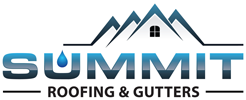Preventing water seepage in roofs during heavy rains and snow melts is crucial to maintain the structural integrity of a building and protect its occupants. The consequences of water seepage are severe, ranging from weakened foundations and decaying wood to mold proliferation and compromised insulation. These issues jeopardize a building’s stability and pose health risks to its inhabitants. Maintaining a well-kept roof is paramount to establishing a formidable defense against water seepage. Therefore, it is crucial to adopt proactive measures that efficiently redirect and manage melted snow and rainwater.
Snow Removal
Wet and compacted snow adds significant weight to roofs, risking structural overload and roof damage. Clearing the snow reduces this weight, preventing damages that would cause water seepage. In cold climates, snow can melt and refreeze, forming ice dams that hinder drainage and cause water to seep under roofing materials. Clearing snow from your roof minimizes ice dam formation and prevents water infiltration.
Moreover, snow accumulation on roofs covers the designed slope, obstructing water flow and causing seepage through gaps, cracks, or damaged roofing materials. Snow removal helps restore proper drainage, reducing the risk of leaks. Additionally, scheduling regular professional snow removal services helps uncover underlying roof issues. This allows timely repairs to maintain your roof’s integrity and minimize potential water seepage.
Proper Roof Drainage
Appropriate roof drainage systems are crucial for effective water diversion from your building. During autumn, gutters, downspouts, and drain openings often get filled with leaves and debris, hindering proper water flow. To ensure effective drainage, regularly clear these systems of any debris that may have accumulated. Installing gutter guards on your roof can further help prevent clogging. For houses with flat roofs, consider contracting a professional to remove debris safely so as to avoid damaging the drains.
When your roof’s drainage system functions efficiently, water is directed away from the roof’s surface and safely channeled toward downspouts and gutters. This prevents water from pooling and minimizes the risk of water seepage into your home.
Quality Roofing Materials
Ensure you utilize quality roofing materials that suit your climate and offer reliable waterproofing. In areas with abundant rainfall or frequent snowfall, it is crucial to have a roof that can bear the weight and pressure of water or snow accumulation. A high-quality roof sustains the loads imposed by precipitation and is less vulnerable to damages like punctures, thereby preventing water seepages. Superior roofing materials also boast excellent waterproofing properties, effectively safeguarding your home against water infiltration.
Regular Roof Inspections
By scheduling routine roof inspections, any existing issues or weaknesses in the roof can be identified and addressed promptly before they lead to significant property damage. During heavy rains and snow melts, water can infiltrate through gaps or damaged areas on the roof surface, causing interior damage.
Hire a skilled roofing contractor to check and seal any cracks, gaps, or holes in your roof. Roofers also pay special attention to areas that are prone to water entry, such as vents, chimneys, and skylights. Timely detection and repair of these issues will help block access points for water and effectively prevent water seepage.
Roof Coatings
Roof coatings are specialized products designed to provide an additional protective layer to roofing materials. The primary purpose of roof coatings is to enhance the roof’s performance and durability, particularly regarding water resistance and weatherproofing.
When correctly applied, roof coatings cover small cracks, gaps, and imperfections in roofs, preventing water from seeping into the underlying layers. This helps protect the roof and the building from water damage.
Consider a Pitched Roof
If you’re building a new structure or replacing the existing roof, adopting a pitched roof design would be more beneficial. A pitched roof design offers several advantages regarding water drainage and helps prevent water pooling and seepage. The primary benefit lies in gravity-assisted water runoff, where rainwater and snowmelt flow naturally down the slope due to gravity. This prevents the accumulation of water or snow on the roof.
Additionally, pitched roofs reduce water pressure on the roof, as water doesn’t gather in large quantities, minimizing the risk of structural damage and leaks caused by excessive weight. In colder climates, pitched roofs also lower the chances of ice dams forming at the eaves, as the melting snow is less likely to stay in one place. This reduces the formation of barriers and potential water seepage.
Summit Roofing and Gutters’ Specialties
Protecting your home from water seepage during heavy rains and snow melts is paramount. Rather than dealing with costly roof damages, taking preventive measures is wise. At Summit Roofing and Gutters, we provide top-quality residential roofing services. Our specialties include roof replacement, seamless gutter installation, and fascia and soffit installation. Since 2003, our mission has always been to provide customers with superior products and services. As an owner-operated business with over 80 years of combined experience, we pride ourselves on being industry experts who get the job done right the first time. Contact us today or visit our offices at 218 Colorado Boulevard, Idaho Springs, CO, for all your roofing needs.
